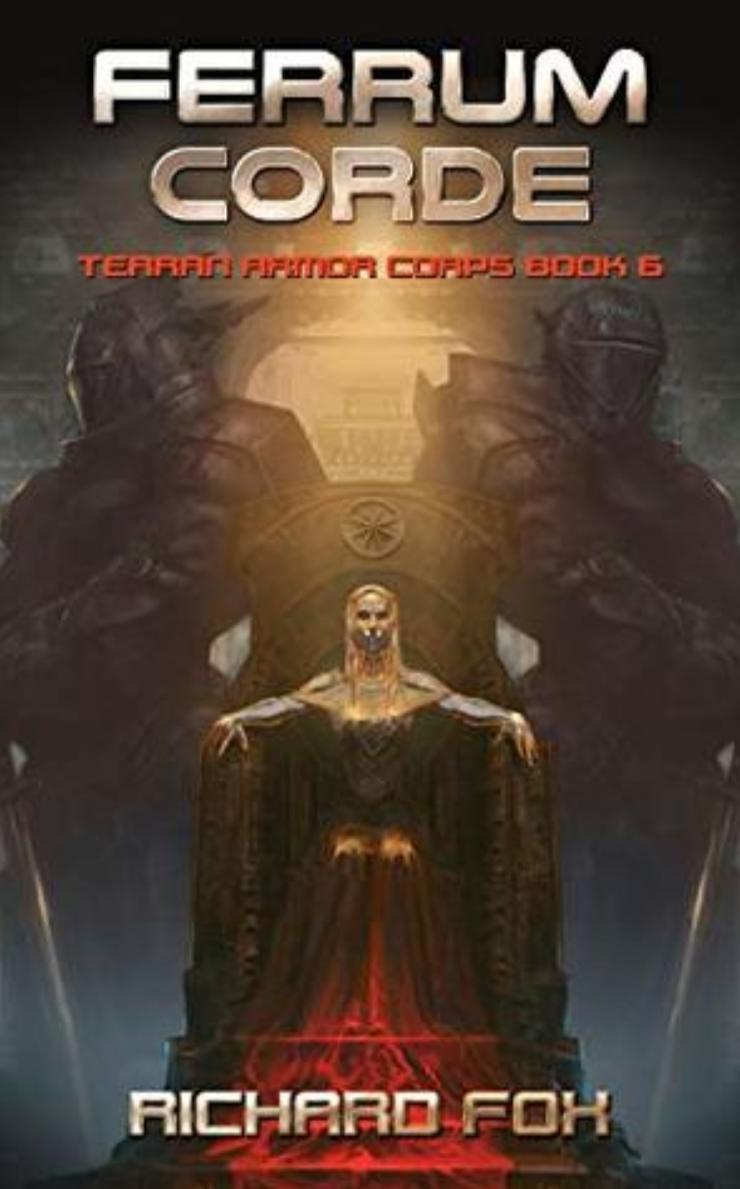Pros
- A lot of action scenes that keep the story moving along at a fast pace
- Some major events that will shift the focus of the story
- More action and what you like in the Ember War universe
Cons
- Aspects of the book require that you read Terran Strike Marines to get a more complete picture of the events
- Some changes that take place between this book and previous book seem a bit abrupt
Ferrum Corde delivers more of what readers love about Fox’s Ember War universe, but it leaves out some parts of the story that requires readers to pick up Terran Strike Marines to get a better picture of events.
Plot
The Terran Union must defend itself against the Kesaht and their allies that Bale has manipulated into attacking Earth.
Characters
The Iron Dragoons, led by Gideon, are still the main characters in this story. Roland, as well as Gideon’s former lance mates, show up as well. The Ibarras also play prominent roles in advancing the plot.
Setting
The story takes place in the space surrounding Earth, the Ibarran Nation, the Kesaht homeworld, and an unexplored system in a remote region of the galaxy.
Ferrum Corde Review
Richard Fox delivers to his fans more fast-paced, exciting action in his 6th installment of Terran Armor Corps. Fans of Fox’s stories will definitely enjoy his latest addition to the Ember War and Terran Armor Corps universe.
What’s especially done well in this book is the character development. Roland, Stacey, Gideon, and the rest of the Iron Dragoons (both former and current) all go through some pretty significant events. And these events allow the characters to develop and show their emotions.
While Gideon remains fairly static throughout the series, we do get a sense of the changes that take place within Aignar and Cha’ril with regards to the Ibarran Nation and Roland, their former lance mates. That the feelings and sense of loyalties vacillate between between friend and enemy reveals just how complicated the relationship is between the Terran Union and the Ibarran Nation.
This ambiguity about who is good and who is bad is carried throughout the entire story, even perhaps throughout the last few books in the Ember War spinoffs. While the Terran Union has committed atrocities—namely, the killing of the procedural humans—they are all human, and the entire galaxy is threatening humanity. The rest of the aliens don’t really see a distinction between the Ibarran Nation and the Terran Union.
There are moments here where readers are able to learn about the true nature of the characters. For the Iron Dragoons, this takes place mostly near the end of the book. But Roland faces some serious obstacles that force him to examine his loyalties.
This book does focus a lot more on Stacey and her state of mind. Readers learn about Stacey’s mental degradation earlier, and that process appears to accelerate in this book. Some surprising reveals regarding Stacey also lend to the excitement to the story, and they provide some answers to certain crucial questions about the Templars.
One aspect of the book I didn’t like was its intertwining of the plot with the most recent book of Terran Strike Marines, Gott Mit Uns. Some of the crossover scenes felt redundant. For readers who haven’t read the Terran Strike Marines, the references to Hoffman’s role regarding Gideon almost requires readers to catch up with that series as well.
Most fans of Richard Fox’s works may not find this problematic, and they’ve likely read everything Fox has written. But my feeling is that each series should be able to stand on its own without requiring knowledge of another series.
The humans in Richard Fox’s works don’t really get a break. First, they face the Xaros. Then they have to deal with the politics of New Bastion. Then they had Bale, the Kesaht, and Vishrakath. It’s just overwhelming enemy after another that threatens extinction for humanity. These near-constant threats almost support Stacey’s claims that Earth should have continued with the procedural human program: crank out as many humans as possible to face those external threats, including the one introduced at the end of the story.
What politics definitely change when Stacey pays a visit to New Bastion, and with the new threat on the horizon, both Terran Armor Corps and Terran Strike Marines are due for a refresh. This book is a definite recommended read for the Ember War fans.



